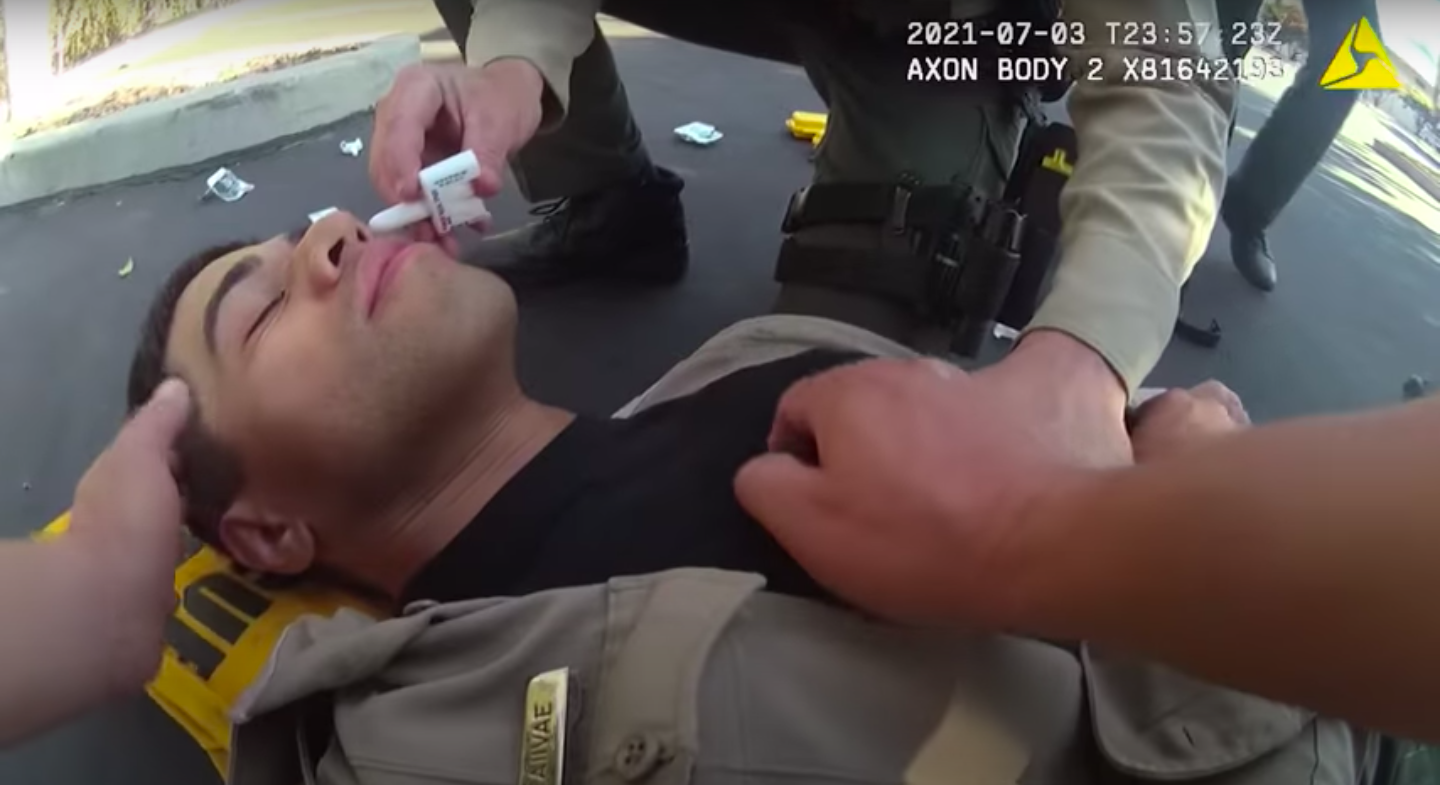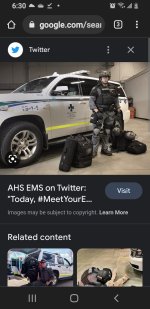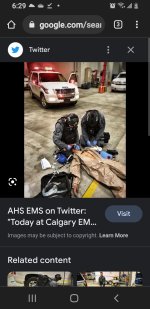Obviously.
Did you read any of these 22 pages? ETF paramedics, in our town at least, are not half-arsed cops.
EMS Chiefs of Canada
The Canadian Tactical Paramedic
Training Competency Profile & Best Practices
May 2008
https://www.emscc.ca/docs/TacticalParamedicProfile-May2008.pdf
CBH99:
I guess you could ask.
As a paramedic, I would ask, if a prosaic paramedic in our town can make up to $260,000 / yr., why take on ETF reponsibilty, AND IN ADDITION, that of a half-arsed cop, all for an extra $1,000 a year?
CBH99:
Not sure how ours compare with yours,
- Tactical Unit - Cross-trained paramedics providing medical support to the Toronto Police Emergency Task Force.
- Marine Unit - Cross-trained paramedics staffing the patrol vessels of the Toronto Police Marine Unit in order to provide support for Toronto Police personnel, EMS services on the waters of Lake Ontario, and EMS service to the Toronto Islands.
- HUSAR - Specially-trained paramedics operate together with elements of the Toronto Fire Services, Toronto Police Service and Sunnybrook Health Sciences Centre Emergency Physicians to provide a joint-service Heavy Urban Search and Rescue team.
- CBRNE (Chemical, Biological, Radioactive, Nuclear & Explosive) - Specially-trained paramedics operate together with elements of the Toronto Police Service and Toronto Fire Services to provide a joint-service Terrorism/Hazardous Materials Response team.
- Public Safety Unit - Cross-trained paramedics providing medical support to the Toronto Police Public Order Unit
- Emergency Response Unit - Single paramedics in SUVs, tasked solely with response to high priority emergency calls.
- Bicycle Unit - Paramedics equipped with mountain bikes, capable of providing either BLS or ALS services in off-road areas, or at special events. Team also works in concert with the Toronto Police bike team to provide first response capabilities in the Entertainment District on weekend nights.
- Emergency Support Unit - Paramedics trained to operate the service's busses and equipment trucks. These respond to all potential Mass Casualty Incidents (fires, multi-patient car accidents etc...), support for large crowd situations such as festivals and parades as well as responding to all calls involving aircraft at Toronto Pearson International Airport
We have Community paramedics. But, they are not part of 9-1-1 Operations.
Seems to be some interest in the role of ( non-ETF ) paramedics at an ASHE.
Note: This is a U.S. "Fire-based EMS" source. But, the concept is the same in our town, and possibly, or possibly not, elsewhere in Canada.
I did read most of it, you bet.
I apologize, I ended up combining my own wishes & bias in with our organization chart & how tactical medics operate within Edmonton metro area - I re-read it and it wasn't very clear.
Our medics are dedicated medics, and don't have firearms at all. AHS would literally have a metaphorical stroke at the very suggestion, and I genuinely don't know if they'd be okay after hearing such a suggestion.
While ours do respond to 911 calls and by all measures are regular EMS members outside of a tactical call-out, they do spend a fair chunk of time with the EPS tactical unit doing the constant refresher training for repelling, ASHE scenarios, etc.
And because those tactical callouts can come at any time, they are
usually deployed for their shift with the SUV's.
Our Community Paramedic Program isn't linked with 911 either.
And we don't have any of those other units you mentioned, except for the Support Unit for the specialized vehicles.
(No Marine unit. Our Tactical Medics are with our Public Safety Unit, we don't actually have a separate Tactical Unit. No NBC type unit. No HUSAR.)
From what I've gathered from your training pipeline and application process, you guys do EMS
far better than we do out here...
AHS is a bit of a mess, and has a corporate side that is a huge part of the problem.
Shortly after becoming Premier, Danielle Smith made some pretty sweeping changes in some areas of AHS & things genuinely became a lot better in noticeable ways, in short order.
Even with that stuff all aside, I suppose comparing Canada's biggest city with a real waterfront & sprawling geographical area to Canada's biggest small town with no waterfront to speak of & much more contained geographically is a bit silly.
I had no idea Toronto EMS had all those specialized units & capabilities!
Brihard, everything you've described is exactly how our tactical medics train & are employed also.
I totally agree they shouldn't be in a stack thats about to make entry, that spot should be filled by a shooter. Nothing wrong with letting the police go in & deal with those threats first, and coming in once cleared to do so.
That being said, I've seen it happen.
When we had our 'terror incident' a few years back, I was working that night. I stopped to assist various groups of pedestrians who had been ran over (who were all somehow surprisingly okay) once the suspected vehicle had been knocked on its side a few blocks ahead of where I was. (Saw it happen from 4 blocks away or so, and gotta admit it was pretty fricking cool to see even from that distance)
One of our tactical medics was riding in a EPS tactical vehicle that was on scene when they did the vehicle takedown...
Once the suspect vehicle was rocked to its side, all the tactical guys got out & spread out about 20ft infront of the windscreen - rifles up, and ready to fire.
Our tactical medic, not having a firearm, pulled out his flashlight & kept the suspect lit up so his movements would be all the easier to watch...but held the flashlight like it was a pistol
After it was all done & the scene cleared, I complimented him on a job well done & good thinking with the flashlight. His response just made me chuckle, even to this day, and I'm not sure why...
"Between you & me, bruh, one minute we're chatting about this & that...the next minute...like...what the fuck even happened!? I just got out & instinctively reached for a sidearm I've never once had, and felt stupid just standing there with absolutely nothing & everybody else has their C8's out, so I guess I pulled my flashlight so they could see what they were shooting at...didn't even notice I'd held it like that until a few minutes ago..." in like the calmest voice ever
I swear I must've slipped from one dimension to another during that incident, as my sense of time perception on that call makes absolutely zero sense even to this day










